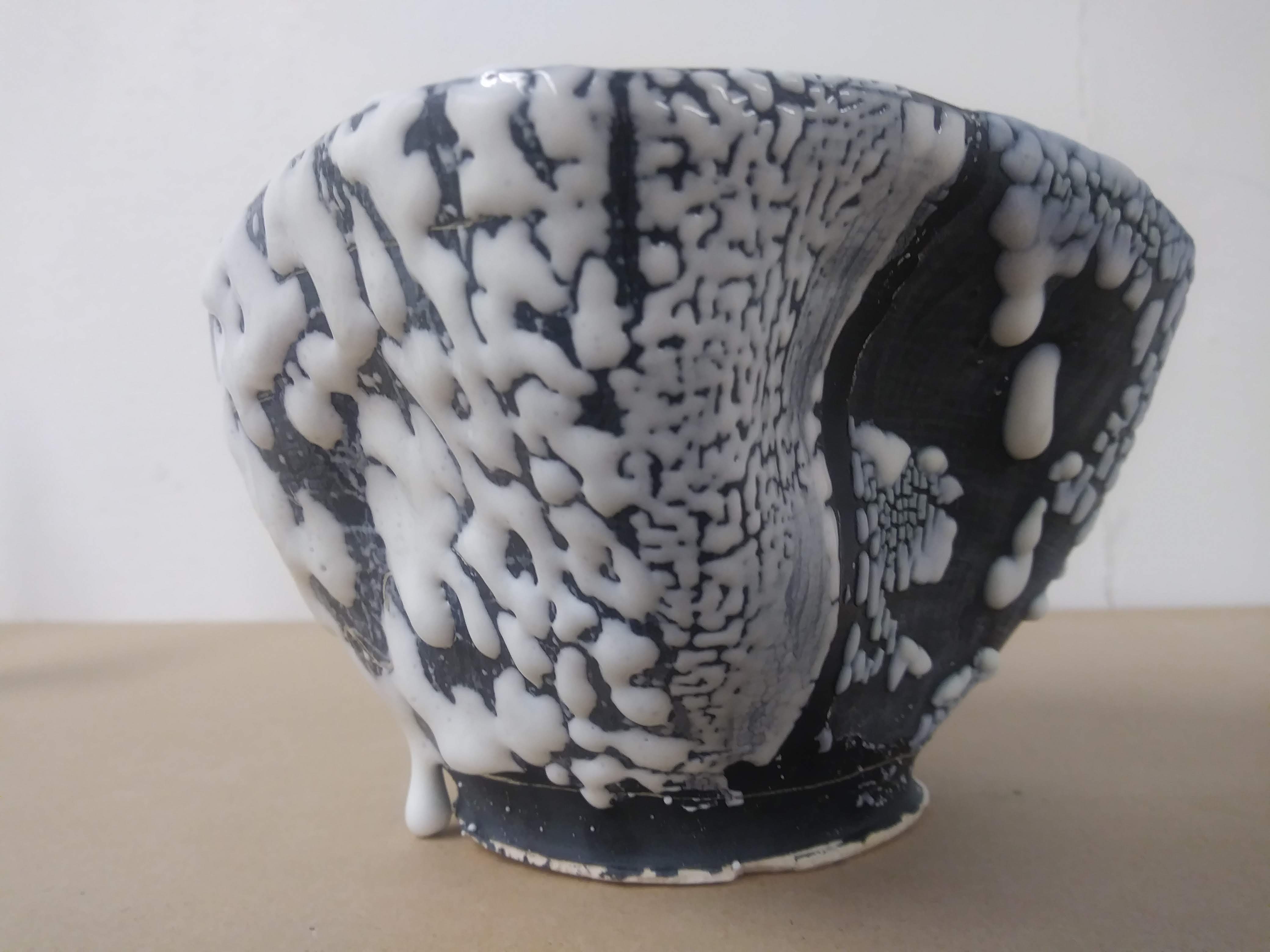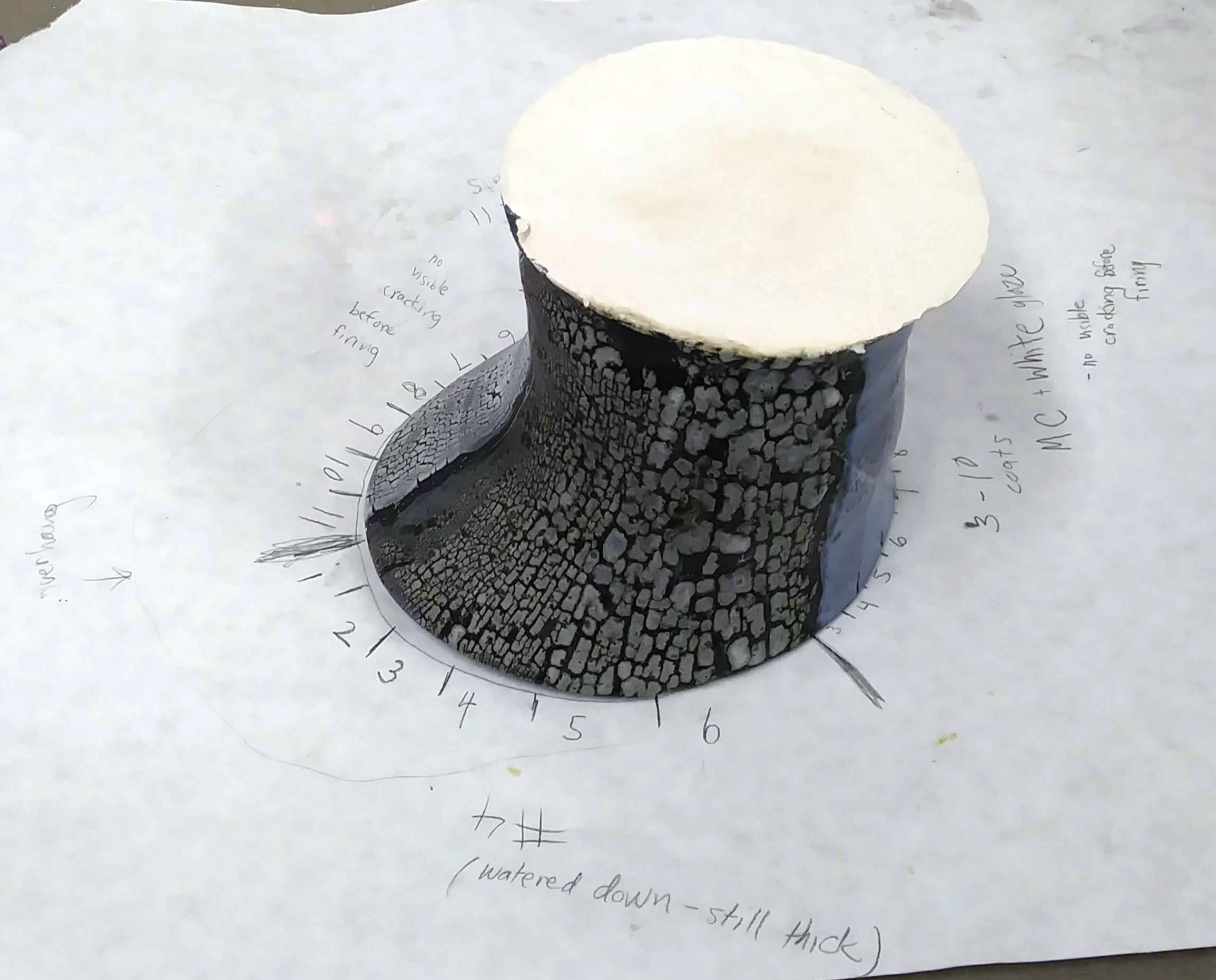Crawling glaze experiment notes:
Initial glaze recipe (Glaze #4)
Borax 264.00 grams
Gerstley Borate 132.00 grams
Lithium Carbonate 86.00 grams
Magnesium Carbonate 350.00 grams
EPK Kaolin 152.00 grams
Silica 16.00 grams
Zircopax (as color additive) 60.00 grams
Applied to Cone 06 bisqueware with terra sigillata in 8 staggered layers on the interior and 8 full coats on the exterior of a curved bowl shape. Fired to Cone 04. Results were underwhelming. Terra Sigillata turned from black to brown. Thick outer coating on the exterior flaked off nearly entirely. On the inside, it resembled lichen (dry platelets) but was matte and inconsistent in color (yellowing, impurities). Fired to Cone 1 in an attempt to encourage softening/curving of the “islands” but made little difference.
Modified above recipe with an additional 102 grams of magnesium carbonate for more crawl.
Applied 8 very thick coats of modified glaze to inside of new bowl-shaped bisqueware with terra sigillata. To the outside, sectioned off 3 areas and applied 6 staggered coats of modified glaze, 3-10 staggered layers of 1 part Mayco “Classic Crackles” white glaze to 1 part magnesium carbonate, and 3-11 staggered layers of 1 part matte clear glaze to 1 part magnesium carbonate. The bottle glaze mixtures had no visible signs of cracking before firing (this would indicate a likelihood of crawling). The modified glaze displayed prominent cracks before firing. Fired to Cone 04. Modified glaze had more platelets on the inside than on the exterior portion, but was inconsistent and still dry in look and feel. The Mayco mixture produced no visible cracking or crawling whatsoever. The matte clear mixture resembled more of a “tree bark” texture than a meander.
Did further testing with discontinued Amaco “White/SP Crawl” glaze and Western Ceramics “Ice Floes”. Divided Cone 04 fired bowl-shaped bisqueware with black underglaze in half with wax resist. Applied 9 staggered coats of Ice Floes to the inside and 6 to the outside. Applied 4 staggered coats of SP Crawl to the inside and 8 to the outside. Amaco glaze was much thicker compared to Western Ceramics glaze. Fired to Cone 05. Amaco glaze was glossy and showed many degrees of meander between coats. Western Ceramics flaked off in areas, the islands were more square than curved, and the texture was matte.
Outcome: 1-2 coats of Amaco “White/SP Crawl” glaze yielded meanders with the most definition and control. In the future, another possibility is to use a high fire clay (Cone 4-6) with a high fire glaze (higher temperatures yield “beadier” results).


self-activation (assembly, healing, organization)
meander
tube